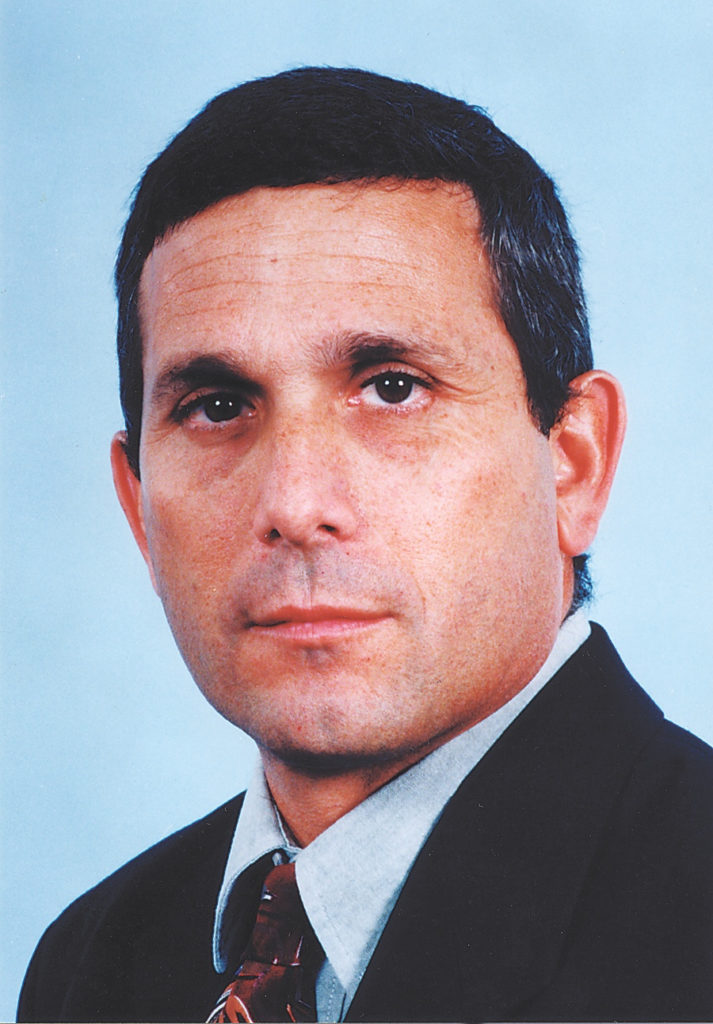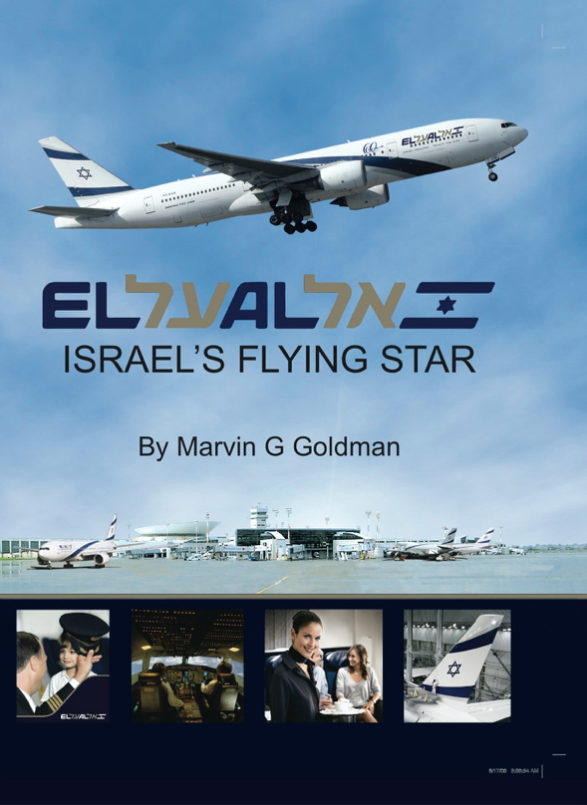
You shall shine as the wings of a dove covered with silver (Psalms 68:14)
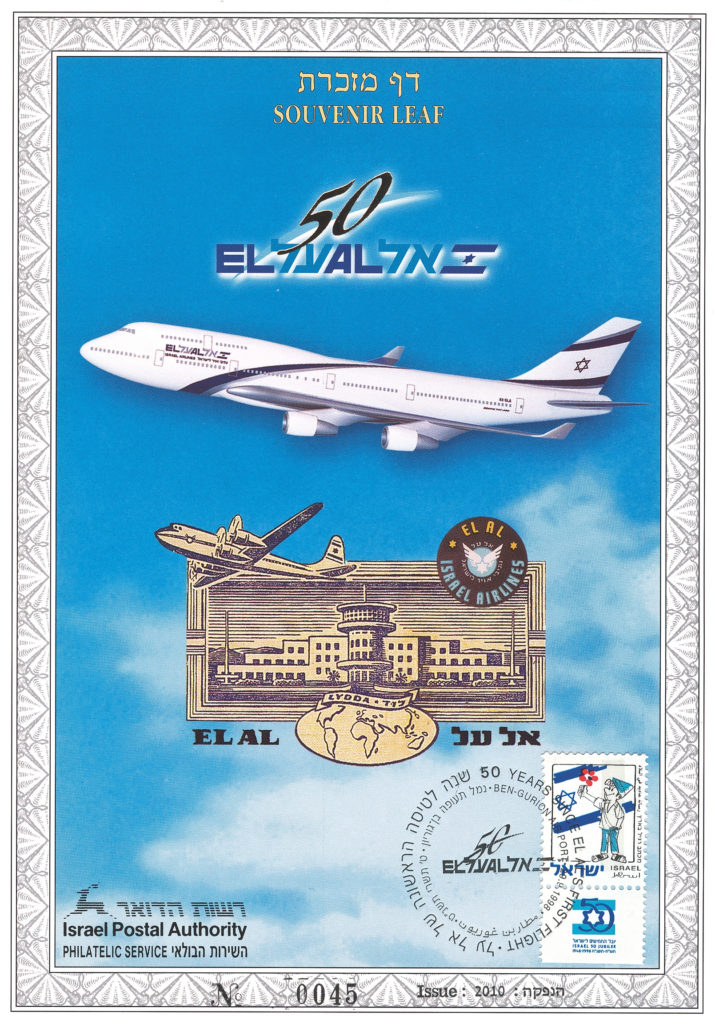
By 1996 the government’s decision to sell all its interest in EL AL to private investors had floundered, as officials wrangled over thorny issues such as the proper valuation of the airline, how to deal with the restriction on passenger flights on the Jewish Sabbath and holidays, how to protect the government’s interest in times of emergency, and the optimal timing and procedures for the sale. Frustrated by the lack of progress, President Rafi Harlev resigned in March 1996, staying on only until appointment of his successor.
Meanwhile, external events created new financial strains. Political unrest and terrorism, particularly in the first quarter of the year, led to a nearly 5% drop in tourism to Israel during 1996, compared to 10% growth in each of the two preceding years. The government’s open skies policy led to even more competition, as Lufthansa and Swissair doubled their seat capacity to Israel while dropping prices in order to seize more market share. Responding with price reductions of its own, EL AL’s revenue fell, while at the same time employee costs rose under a new labor agreement, and aviation fuel prices jumped more than 20%.
EL AL tried to cope, adjusting capacity and schedules accordingly and reducing manpower and other expenses. But the measures were not enough. After nine consecutive profitable years, lthe airline ended 1996 with a loss of $83 million.
New Generation Management
To introduce fresh ideas and confront the heightened competition, EL AL appointed Joel Feldschuh, age 47, as president effective 1 October 1996. Feldschuh, formerly a brigadier general and McDonnell Douglas F-15 Eagle fighter pilot in the Israel Air Force, was also experienced in business, having served as president or chairman of other Israeli companies. He supported renewal of the privatization process, and his avowed goal was to outperform the competition by enhancing EL AL’s customer service, both on the ground and in the air.
New Service Initiatives
Feldschuh first targeted the airline’s employees. He established special quality service training courses and workshops for all, stressing that for EL AL to grow, and even to survive, its guiding objective must be the finest care for every passenger. He recognized that although the airline had a fine reputation for security and operational excellence, that was not enough—it had to meet and exceed customer expectations.
Noting the sharply increasing proportion of business travelers compared to tourists, Feldschuh set out to change the way EL AL scheduled flights. Previously, maximum aircraft utilization (on the days the airline was permitted to fly) was the goal. This meant an inordinate number of flights departed at inconvenient times of day. Feldschuh preferred to lose some efficiency in order to have a more attractive schedule, thereby raising fare yields. He insisted that published schedules be kept. Flights were no longer canceled, or doubled up, when insufficient passengers were anticipated. Increased frequencies on some routes were introduced to meet market requirements and develop passenger loyalty.
During 1997-98, the number of business class seats on the 747s was increased to about 60, and legroom lengthened; in coach class, seats were removed so that everyone would have at least a 32in (81cm) pitch. A new lounge for first and business class passengers and King David Club members, 40% larger than the previous one, was opened at Ben-Gurion Airport.
On board a fresh ambiance was emphasized by revising the in-flight magazine in 1998 to a more global outlook and renaming it Atmosphere. In-flight audio and video programming also adopted the ‘Atmosphere’ trademark. That same year, smoking was banned on all EL AL flights worldwide.
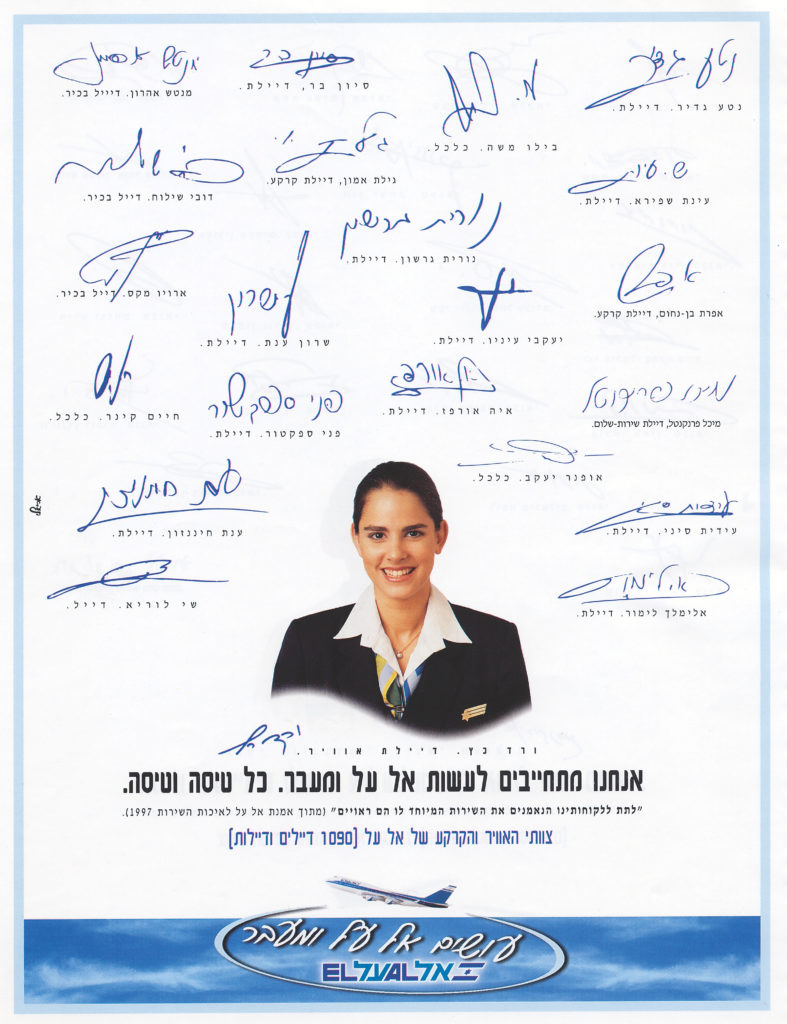
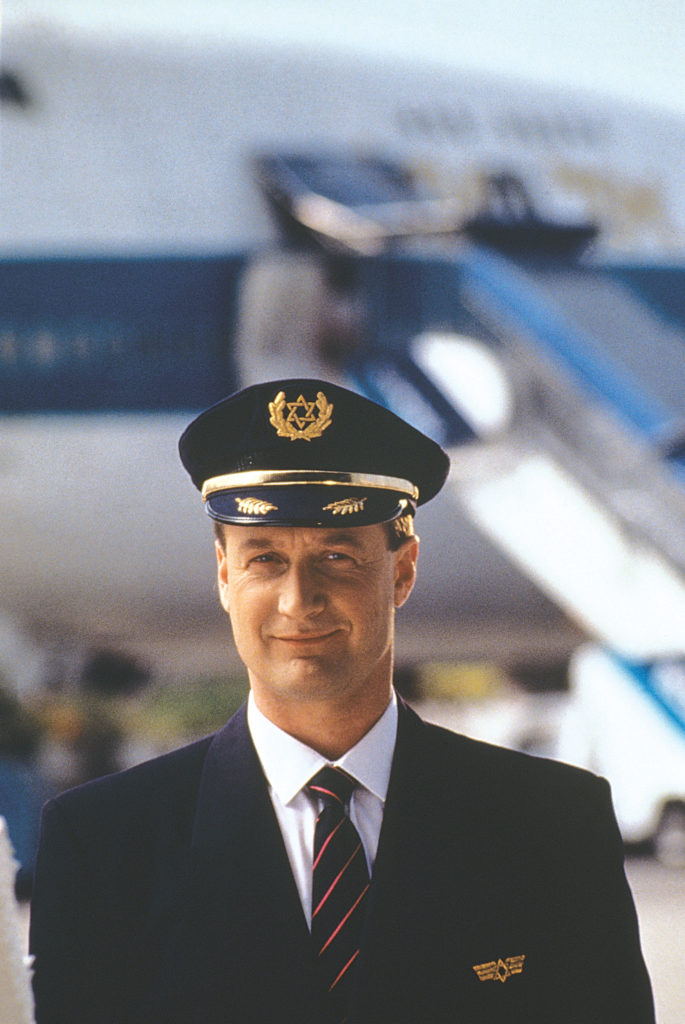
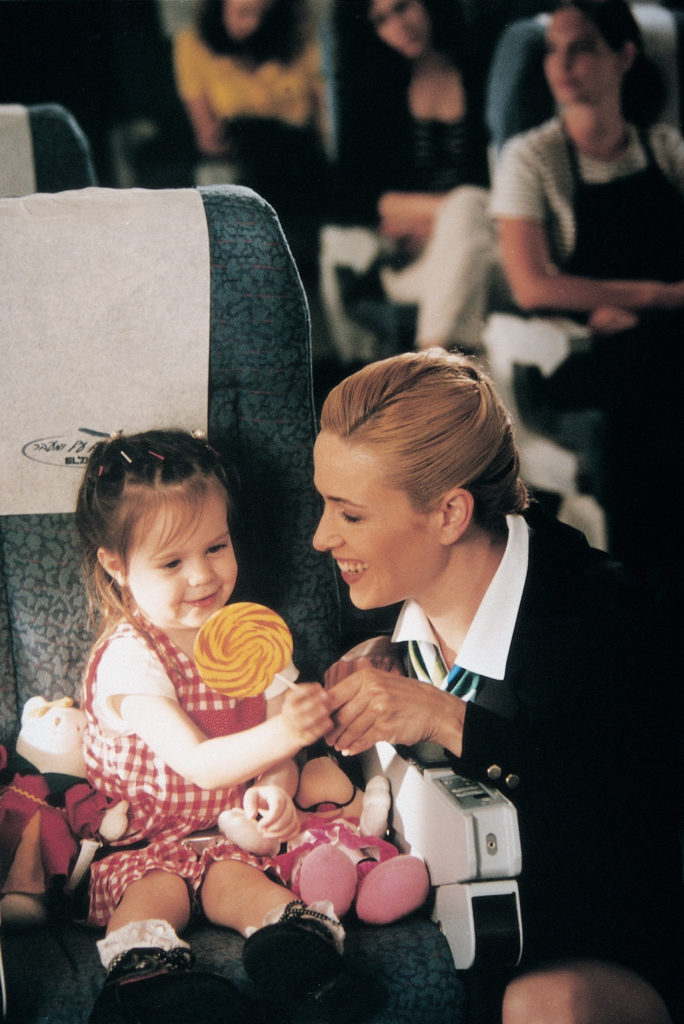
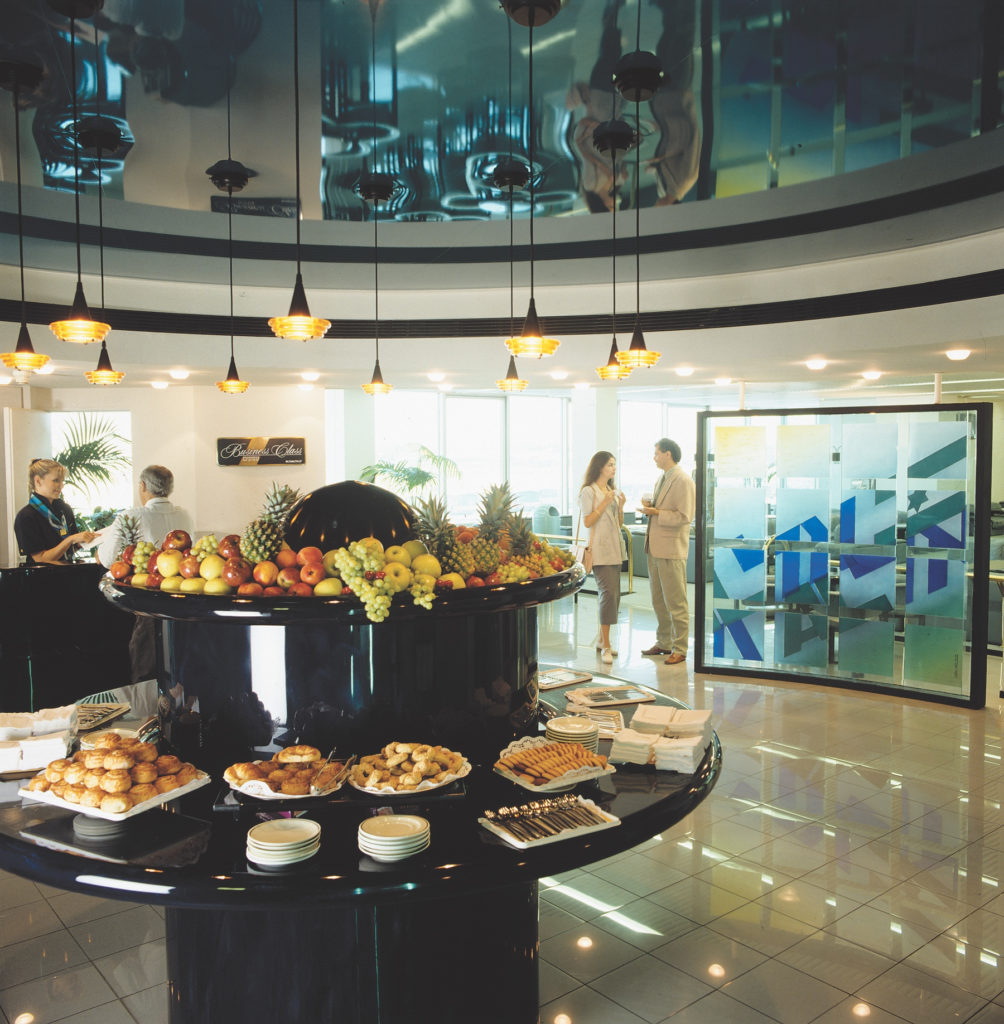
Creative Marketing
Outgoing Israeli travel continued to increase—by 16% during the two-year period 1997-1998. EL AL contributed through special promotions, such as ‘Up 2 Days’, weekend getaways to Europe; ‘Fun Day’; and ‘Rent a Jet’, leasing aircraft to corporations and organizations for company outings. Other ‘weekend’ incentives bloomed—‘Spa Weekend’, ‘Show Weekend’, and ‘Football’, ‘Royal’, ‘Business/Pleasure’ and ‘Family Weekends’. These not only contributed to profitability, they improved EL AL’s image as a dynamic and highly competitive force in the market.
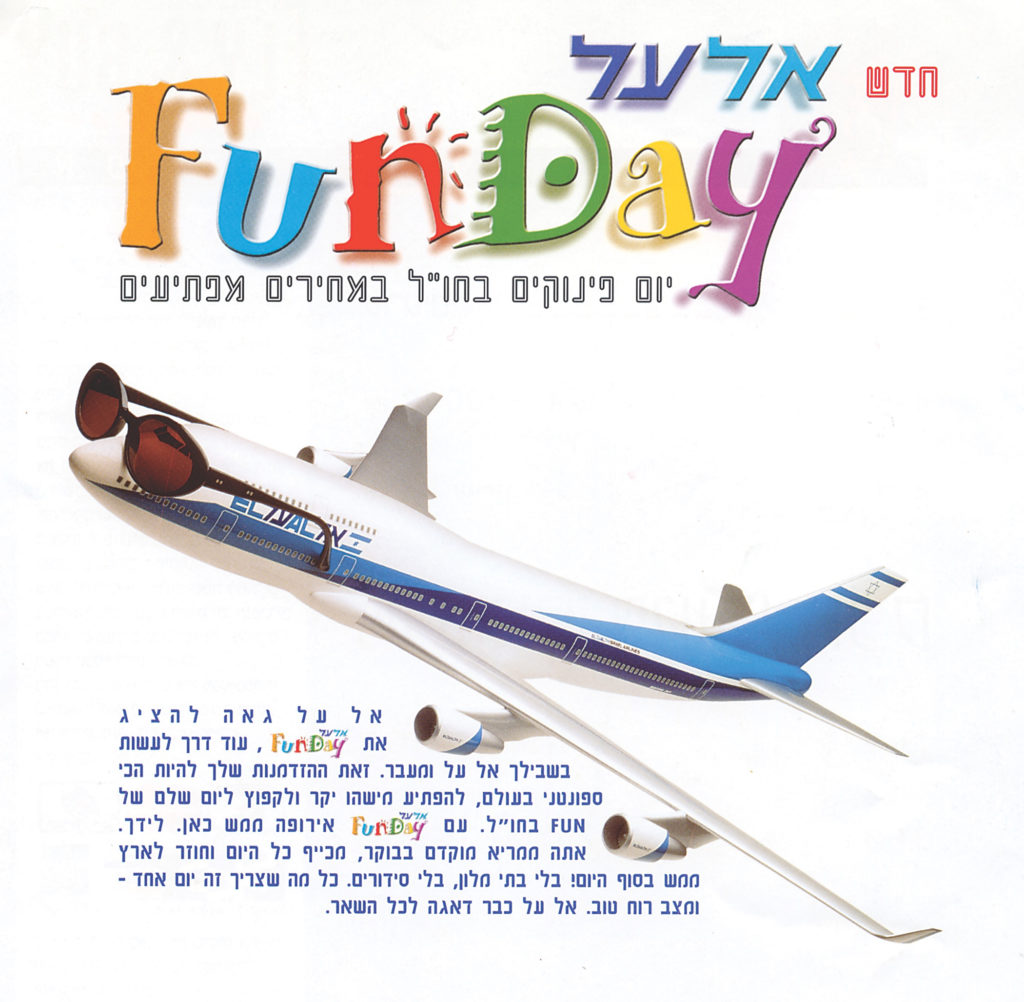
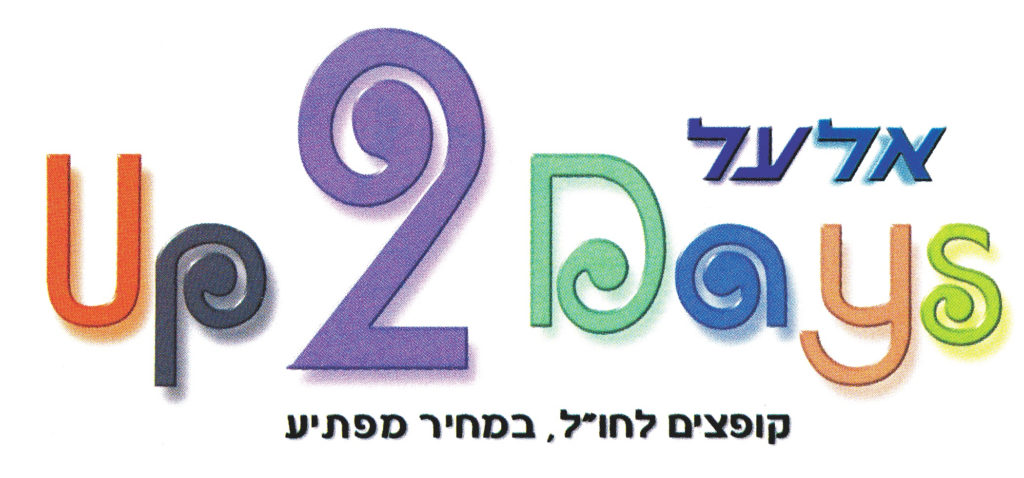

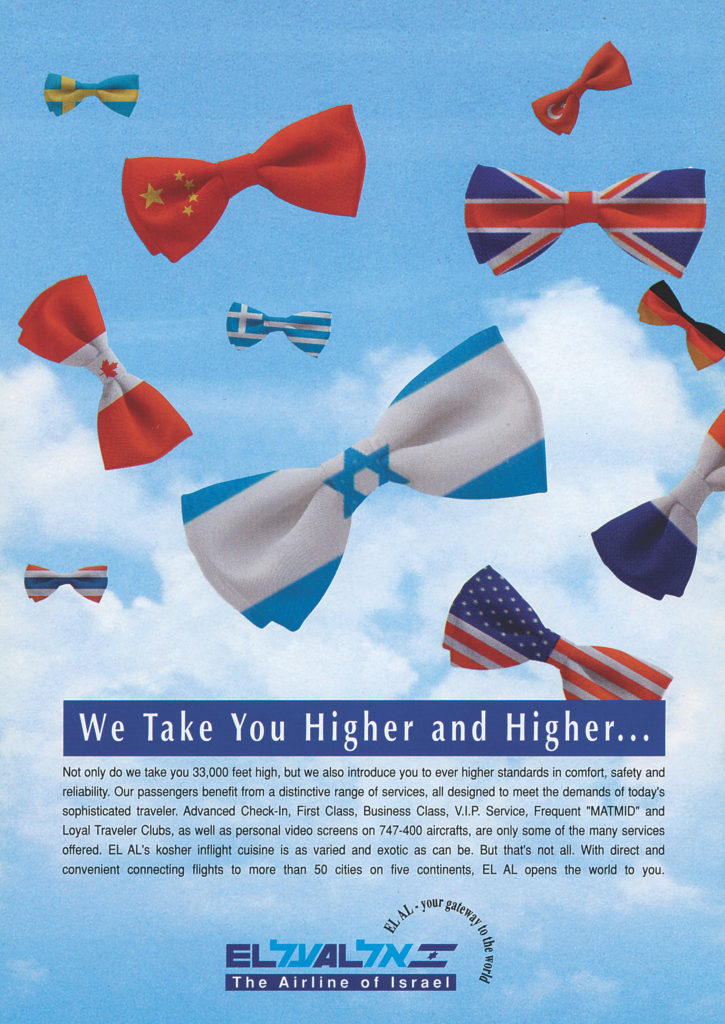
Financial Turnaround
The innovations favorably impacted financial performance. EL AL almost broke even in 1997, reducing its annual loss from $83 million in 1996 to $4 million, and turned a profit of $22.7 million in 1998 and $16 million in 1999.
Tourism to Israel declined in 1997 due to continued concern about terrorist activity, but remained stable the following year and grew 15% in 1999. Jet fuel prices also were like a roller-coaster, down 9% in 1997 and 25% in 1998, but shooting back up by 18% in 1999. One constant trend was the government’s open skies policy, which now gave charter companies full freedom of activity, without limiting them to incoming tourism. This further encouraged foreign airlines, resulting in continuing increases in seat capacity to Israel. Nevertheless, EL AL was now meeting the competition, improving revenue, and gradually increasing its service profile in the business travel and tourist markets.
Privatization Wave Rolls In Again
With EL AL’s return to profitability, in December 1998 the Israeli government’s Ministry Committee on Privatization decided anew to privatize the airline. This time, however, the proposal was to sell to private investors only 49% of the ownership. EL AL would still remain a majority owned state corporation. However, key issues remained unresolved, including questions about deficiencies in funding of employee severance pay obligations, use of the offering’s proceeds, compensation to EL AL for meeting security demands, and how to structure the proposed new ownership arrangement.
New Generation Aircraft and Fleet Renewal
By 1997 it was clear that EL AL had to modernize its fleet both to increase efficiency and meet passenger expectations. The ten 747-200s, ranging from 18 to 26 years in age, were much more costly to operate than newer designs, and their size made them unsuitable for less-traveled routes and seasonal traffic fluctuations. Customers, particularly those on business, also preferred more frequencies which smaller aircraft could provide.
Boeing had recently started building a ‘Next-Generation’ (‘NG’) series of its popular twin-engine classic 737, incorporating more advanced technology in wing design, with increased fuel capacity and improved fuel efficiency, enabling flights up to 6,000km (3,700mi). The 737-700 accommodated around 110 passengers while the 737-800 seated about 150, ideal for even EL AL’s farthest destinations in Europe, and suitable for closer regional destinations as well. Powered by CFM International CFM56 engines, their improved fuel efficiency over the 757 also made them attractive. On the other hand, the European consortium Airbus Industrie offered the competitive A320 and A321.
EL AL issued a tender for five new 110/150-seat aircraft for delivery in early 1999, and Boeing and Airbus embarked on a keen competition to secure the order. At first, it was doubted that EL AL would choose Airbus, as it had been an all-Boeing airline for more than 30 years and switching to another manufacturer would require investment in service equipment and added familiarization and training costs. But the slightly wider cabin of the A320 family was attractive, and the initial price offer from Airbus was lower than that of Boeing.
After each manufacturer submitted a series of successively lower-priced proposals, in January 1998 the EL AL board unanimously accepted Boeing’s bid of about $170 million covering two 737-700s and three 737-800s. The directors felt that the Boeing package was more attractive and that Boeing was more likely to meet the target delivery dates in 1999. Although some commentators speculated that Israeli government officials had pressed the board to select Boeing, EL AL insisted that the decision was made without political pressure.
During 1998 EL AL also ordered an additional 747-400 for delivery the following year, mainly to serve New York and Los Angeles. Further, it agreed to purchase two 767-200ER (Extended Range) aircraft from Air France for delivery in 1999, which were particularly suitable for nonstop routes to Canada and to Asia. The cost of these three aircraft and the five 737NGs, about $500 million, was financed largely through long-term loans from the Israeli banking system.
To complete the fleet overhaul, EL AL needed a 250/300-seat type for North American and Asian routes. Boeing offered the twin-engine 777-200, while Airbus suggested a combination of four-engine A340-300s and twin-engine A330-200s. Another spirited bidding war ensued. Even though the size of the order itself was not large, Boeing wanted to retain its influence in Israel while Airbus eagerly sought a breakthrough in the country.
EL AL selected Boeing again, ordering three 777-200ERs on 27 October 1999 for delivery in 2001, at a price of $350 million. Boeing agreed to purchase products from Israeli companies amounting to at least 50% of the cost of the aircraft, and to provide EL AL with overhaul contracts amounting to $40 million.
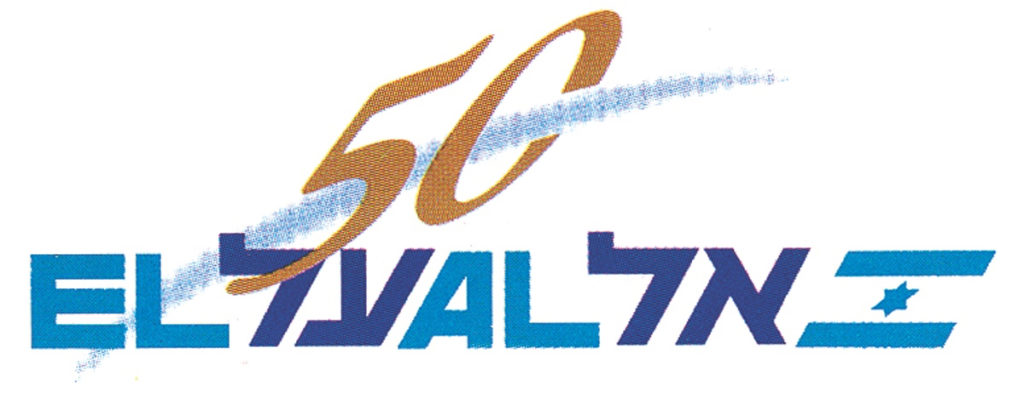
Blue and Silver Ribbons: 50th Anniversary
In anticipation of the arrival of the eight aircraft, management decided to project a new visual image that signaled change—to remind customers that the airline had indeed changed, with improved service, comfort and efficiency. This conveniently also coincided with EL AL’s 50th anniversary in 1998-99.
The main revision was in the color scheme. EL AL’s traditional blue markings, in place for nearly 30 years, were replaced by a novel blue and silver ribbons design, with the ribbons wrapping around the aircraft and flowing into a sweeping Israeli flag on the tail. The popular EL AL linear logo on the aircraft was retained, but the colors were changed to blue and silver-gray.
All eight aircraft arrived in the new livery: the five Next-Generation 737s (737-800s 4X-EKA/B/C) and 737-700s 4X-EKD/E); the fourth 747-400 (4X-ELD); and the two 767-200ERs (4X-EAE/F). The existing fleet received the new colors as routine repainting became due. The 737NGs and all 747-400s were given names of Israeli cities, inscribed on the nose in English on one side and Hebrew on the other.
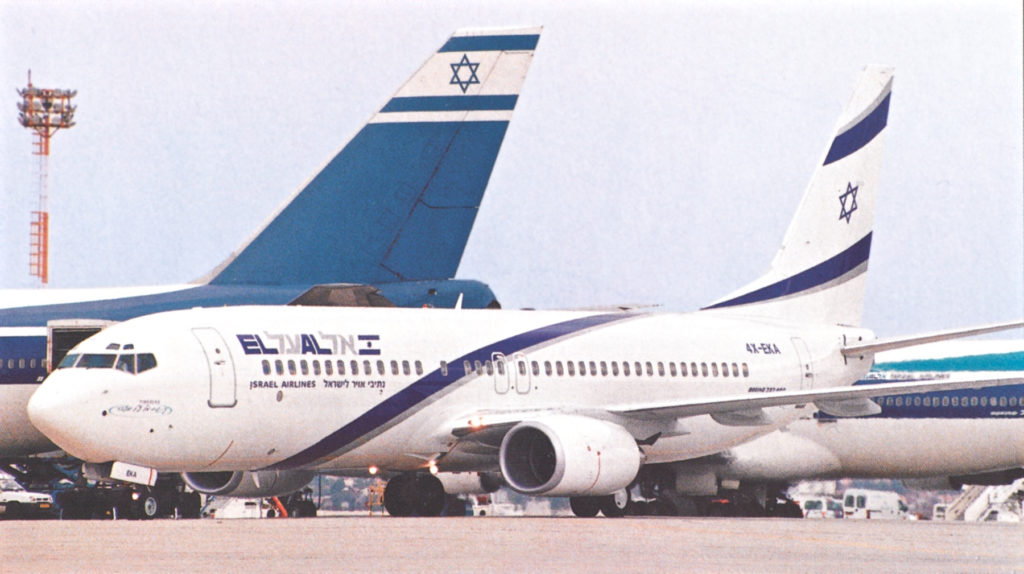
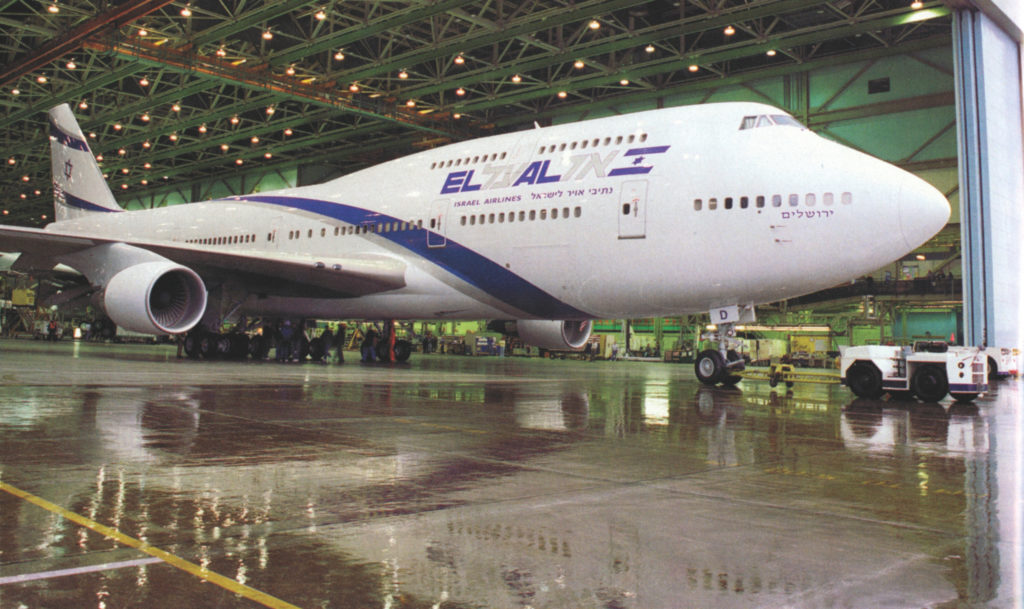
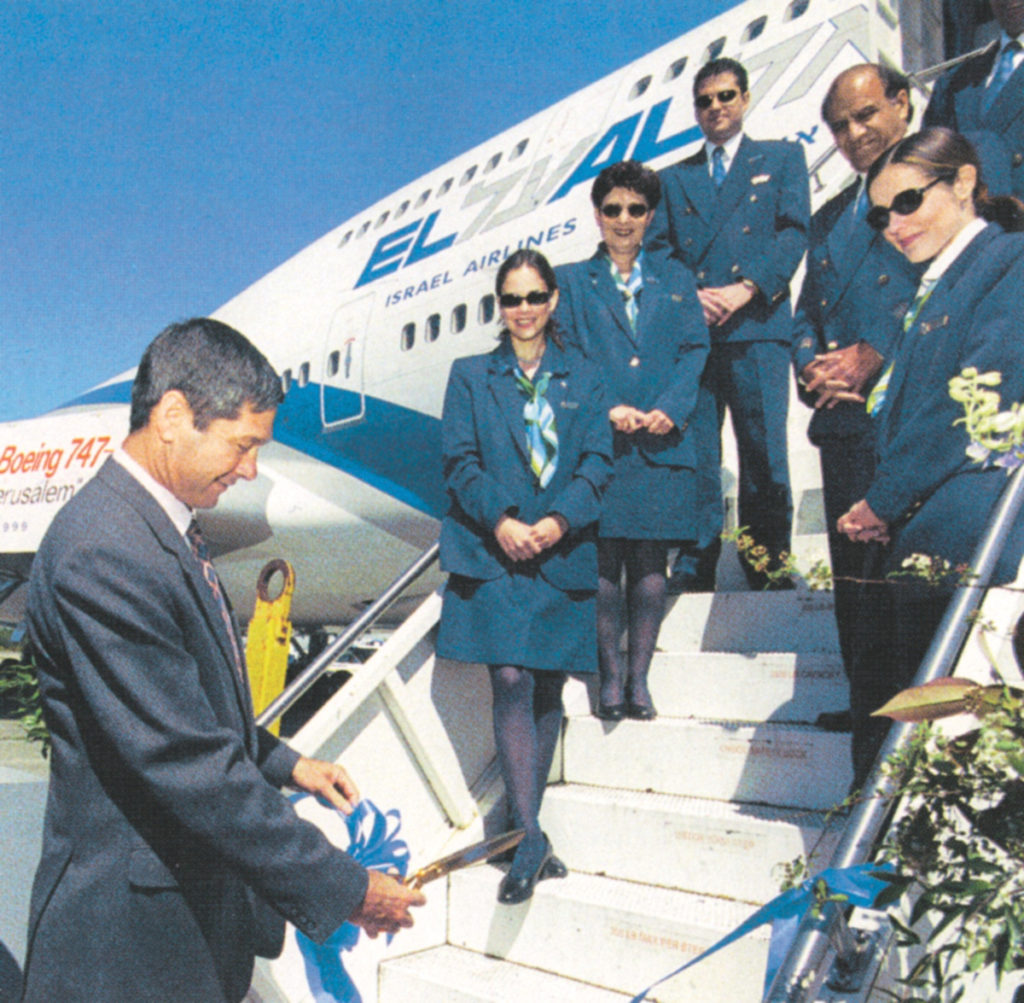
Code-Sharing
Globalization of the world economy and the quickened pace of communications has led to demand for more frequent and convenient air schedules. No matter its size, no single airline is able to offer flights ‘anywhere, anytime’ because of traffic rights restrictions and aircraft availability. One way to overcome these limitations and at the same time broaden the appeal to more customers is through so-called code-sharing cooperative agreements with other airlines. These started in the 1990s and have proliferated worldwide.
Code-sharing agreements typically enable two or more airlines to pool resources and offer more flights. Typically one airline markets and also operates a particular flight, furnishing the aircraft and crew, and the other only sells that flight. Under code-sharing, the IATA designator (code) of either airline is used, depending on which entity sells the seat. For example, in a code-share flight involving EL AL and Iberia Airlines of Spain, ‘LY’ would denote a booking sold by EL AL, and ‘IB’ would be used as the flight prefix for a ticket sold by Iberia. The particular flight would be operated by only one of the two airlines.
Each airline in a code-sharing agreement can thereby ‘increase’ flight frequencies to joint destinations, and can also offer service to cities not covered by its own network, either directly or through connections.
EL AL began code-sharing in the second half of the 1990s and by 2000 had such agreements with 15 airlines.
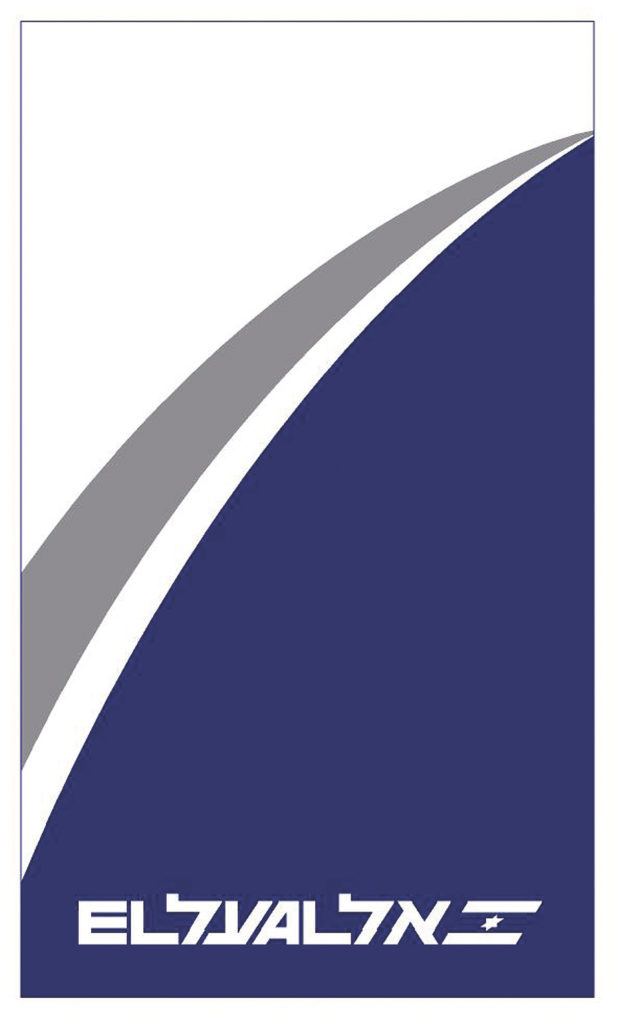
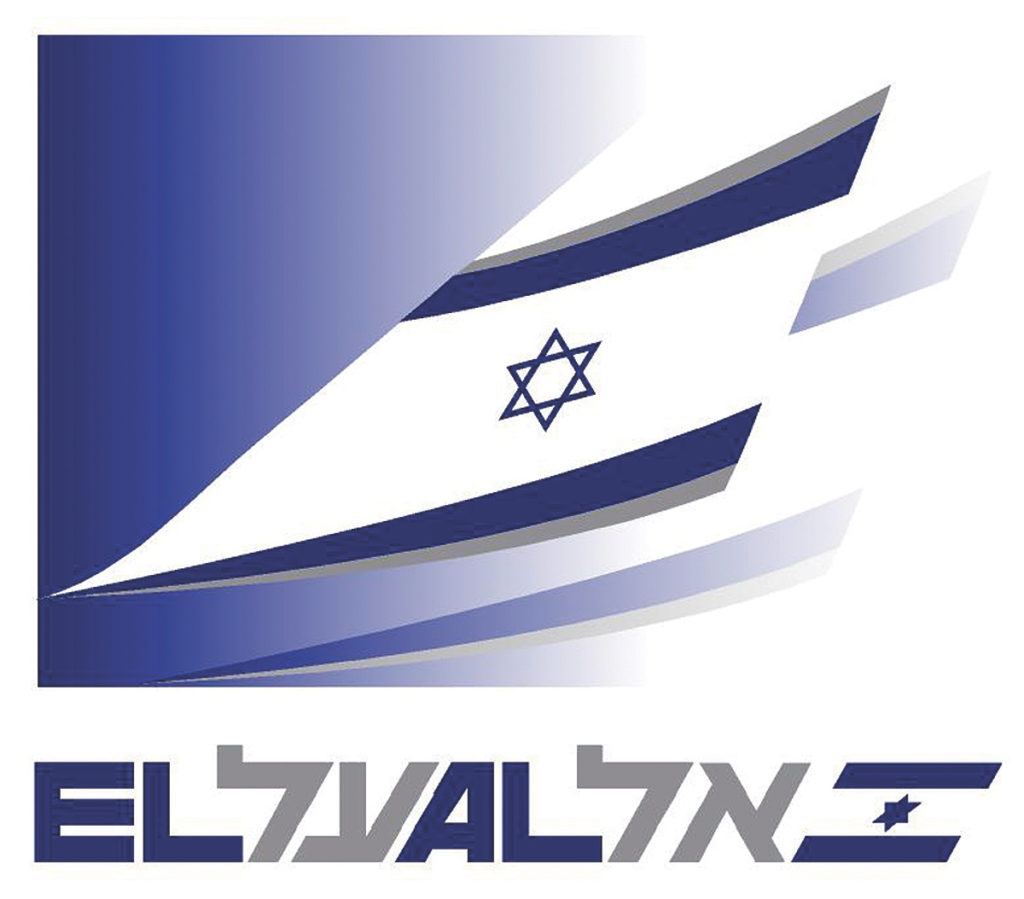
Ruth Rahat, 2000.
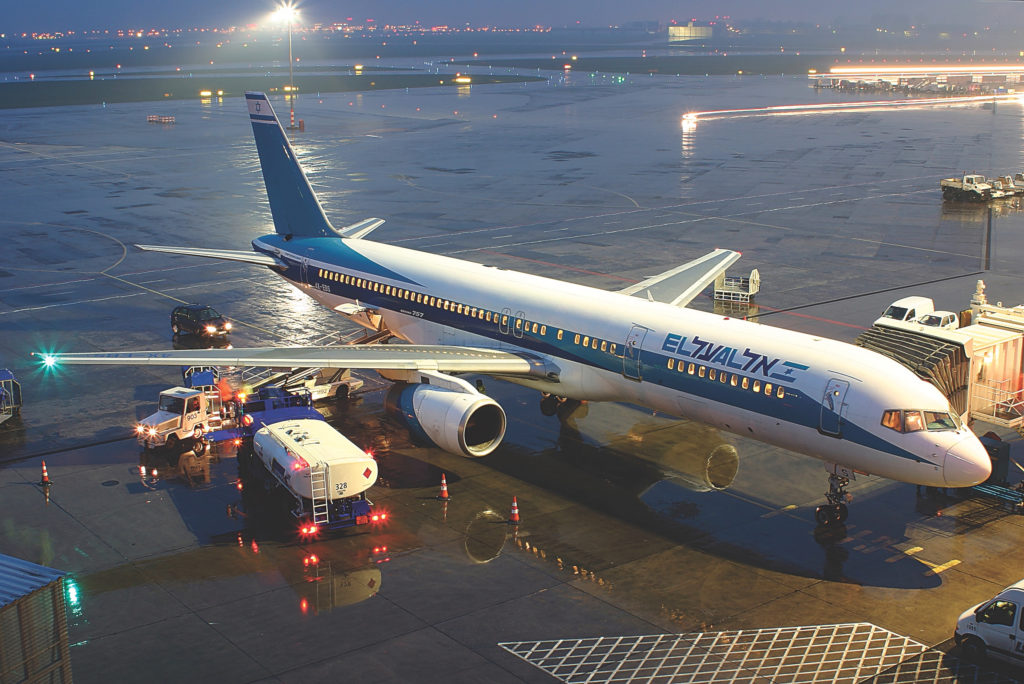
On the Worldwide Web
In 1996 EL AL launched its website (www.elal.co.il) on a trial basis. By spring the following year the completed site became available in the US and Israel, with Italy and other countries soon following. Use of the Internet for electronic commerce, including airline reservations and ticketing, mushroomed towards the end of the 1990s. By 2000 EL AL’s flight reservation system was included on its website; and electronic ticketing was introduced, at first for travelers from New York and London to Israel, in March 2000. Internet reservations and ticketing are now the standard preferred method utilized by almost all airlines.
2000 Millennium: A Year of Hope Denied
High hopes marked the turn of the century. EL AL had been operating profitably, travel to and from Israel was on the increase, and Israel expected a record number of tourists during the millennium year, including many Christian groups making pilgrimages to the Holy Land. The Vatican committee responsible for hosting and transporting pilgrims to visit Israel in the year 2000 appointed EL AL as ‘The Official Airline to the Holyland’, and Pope John Paul II visited Israel between 20-26 March 2000, traveling on a special flight designated LY2000.
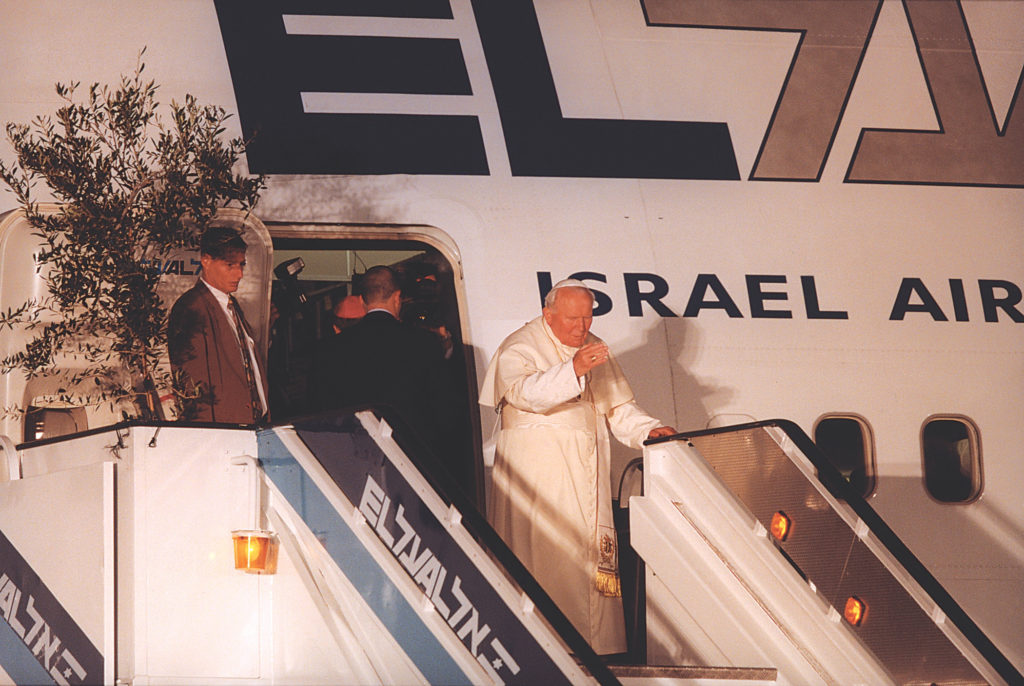
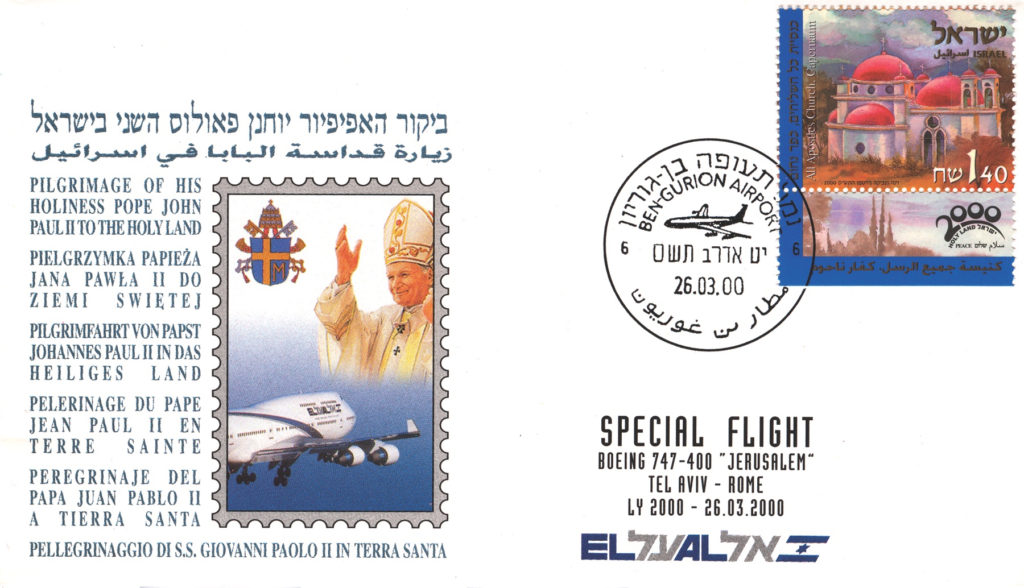
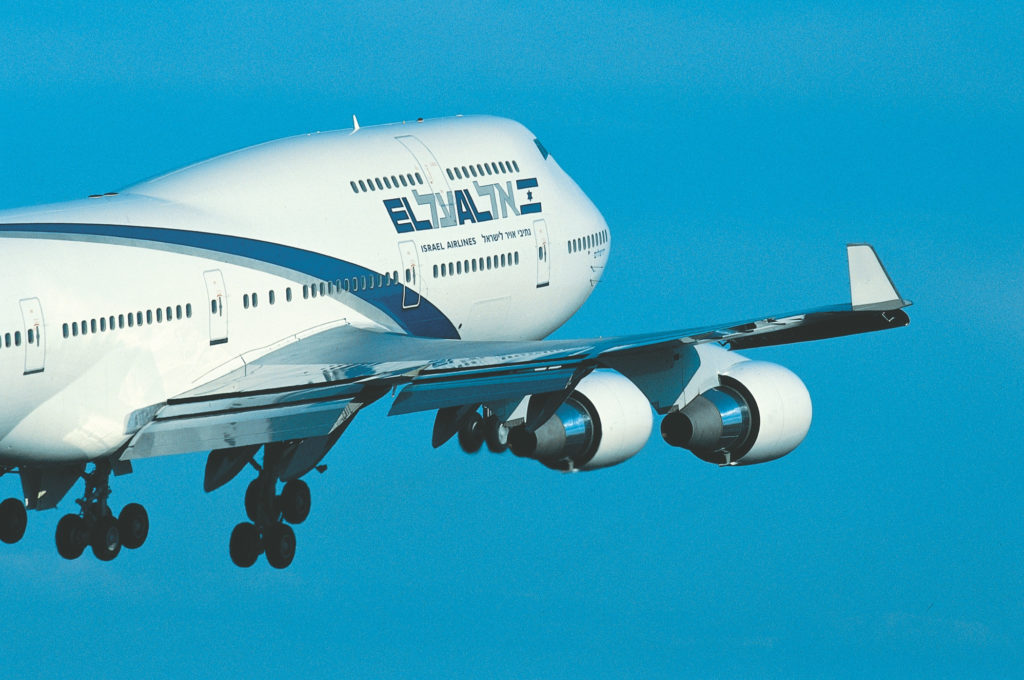
Palestinian violence had ebbed somewhat compared to prior years, Israel pulled out of southern Lebanon in May 2000, and President Clinton of the United States attempted to forge a comprehensive peace agreement between Israel and the Palestinians, inviting PLO Chairman Arafat and Israeli Prime Minister Barak to a summit in Camp David, Maryland, during July. After two weeks of discussions, however, the summit ended without agreement. In September Arafat unleashed Fatah members to renew attacks on Israeli civilians and military personnel. Palestinian riots broke out at the end of September, followed by vicious suicide bomber attacks.
Because of this turbulent situation, flight reservation cancellations started rolling in, and more than 25% of bookings disappeared in October. The fourth quarter saw a 20% drop in passengers compared to the previous year and a 12% slump in overall load factor. Meanwhile, the price of aviation fuel jumped by 58% during 2000, costing EL AL $86 million more than in 1999; and charter company activity and excess seat capacity in the Israeli market continued unabated. Moreover, EL AL’s traditionally profitable cargo division suffered when the Israeli government authorized Cargo Air Lines (CAL) to use its own freighters (instead of requiring CAL to lease them from EL AL), and the increasing use of wide-body types to Israel by overseas airlines expanded their cargo capacity and market share. The hopes of 2000 evaporated into a $109.4 million loss for EL AL, and privatization was placed on hold again.
President Joel Feldschuh became another casualty of the economic and political turmoil, resigning his position at the end of October. On 16 November 2000, David Hermesh, who had been serving as an executive vice president of Israel Discount Bank, was appointed president of EL AL. Joseph Ciechanover, the airline’s chairman of the board, completed his term in February 2001 following six years of service, and on 3 July 2001 was replaced by Michael Levi.
777s Join the Fleet
EL AL took delivery of three Boeing 777-200ERs between January and April 2001, a bright spot during difficult times. First to enter commercial service, on 24 February 2001, was 4X-ECB, named Negev. EL AL gave each 777 the name of a region in Israel: the other two were Galilee (4X-ECA) and Hasharon (4X-ECC).
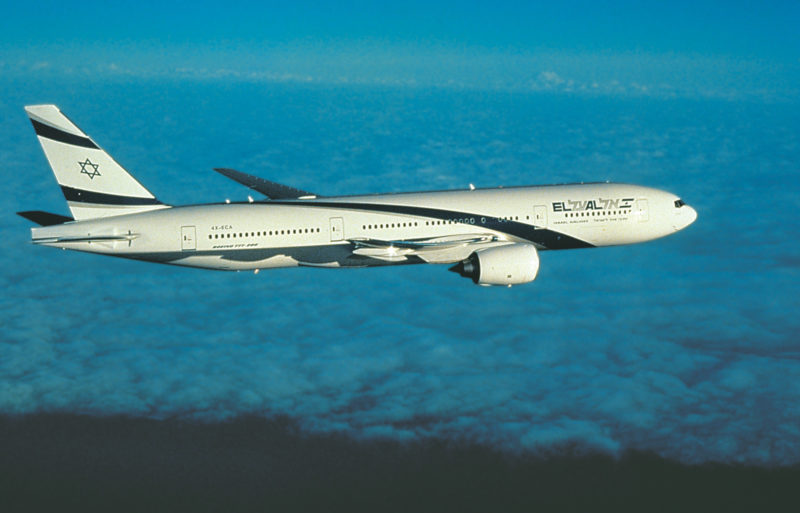
When introduced, the wide-body (twin-aisle) 777-200 was the largest twin-engine aircraft in the world. EL AL chose the Rolls-Royce Trent 895 engine, with a fan diameter of 2.8m (9.2ft), larger than any other in the fleet. In EL AL service, the 777s generally have between 275 and 285 seats.
This remarkable airliner was one of the first commercial aircraft designed entirely by computer. It also was Boeing’s first airliner with an electronically signaled control system, or ‘fly-by-wire’. FBW interposes a computer between the pilot and the final control actuator or surface, and software programs modify the inputs of the pilot. These carefully developed programs have been proven to furnish maximum operational effect without compromising safety, and the redundancy of computer and digital support systems have made the 777 one of the most reliable aircraft operating today.
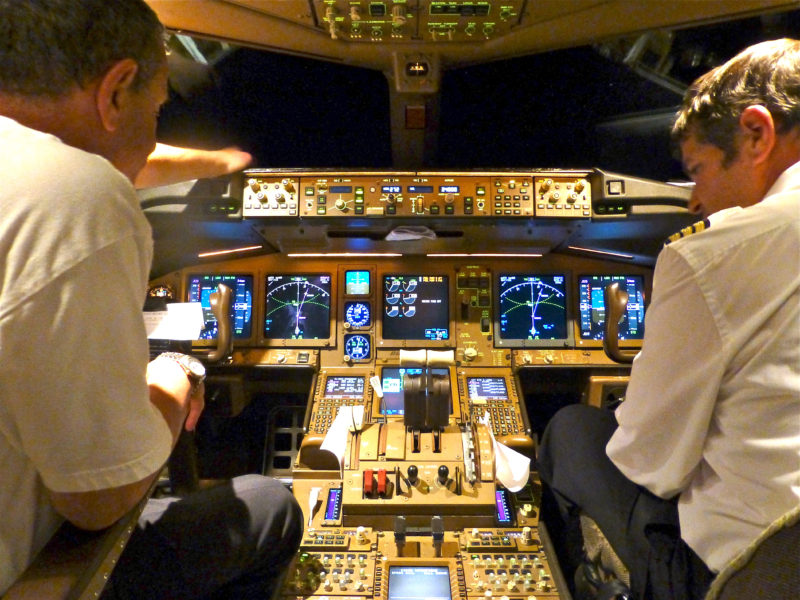
Filling the size gap between the 747 and 767, the 777ER has a range of 14,300km (8,850mi)—the longest range airliner in the world when first built—and thus can operate to EL AL’s farthest destinations, such as Los Angeles and Hong Kong.
With delivery of the new aircraft, older ones were retired. Three 747-200Bs (4X-AXA/B/Q) and a 747-100F (4X-AXZ) were scrapped at Tel Aviv, and a fourth -200B (4X-AXC) used for spares; two 737-200s (4X-ABN/O) that had been leased out were sold in 1999; and two 757s (4X-EBL/R) were sold in early 2001. By the end of 2001, out of the 28 aircraft in EL AL’s fleet, 11 were less than three years old, and the average age was ten—one of the youngest fleets in the industry.
On 9 May 2001 EL AL was the first airline to operate from New York-JFK’s new international Terminal 4, which featured expanded and more efficient passenger amenities including dedicated first and business class lounges.
9/11
On the morning of 11 September 2001, 19 men affiliated with the al-Qaeda Islamic terrorist movement hijacked four US airliners, two of American Airlines and two of United Airlines. Each hijack team included a member who had taken some pilot training. With callous indifference to human life, the hijackers seized control of the two Boeing 767s and intentionally crashed them into the World Trade Center Towers in New York City, a 757 was flown into the Pentagon near Washington, DC, and another 757, after passengers tried to retake control, crashed into a field in rural Pennsylvania. Almost 3,000 people were killed as a result of the attacks, including nationals of more than 80 different countries.
For the first time in history, the USA, Canada and several other countries forced all non-emergency civilian aircraft in their airspace to land immediately. Tens of thousands of passengers across the world were stranded. The Federal Aviation Administration (FAA) closed US airspace to all international flights. Flights in the air had to be redirected to other countries, such as Canada.
One EL AL flight headed for New York diverted to Toronto. Because there were not enough hotel rooms to accommodate those on flights landing there, EL AL worked with Toronto’s Jewish community to place all its stranded passengers in homes.
Following the attacks, EL AL’s US office in New York immediately created an emergency operations center manned constantly. The reservations center also was staffed at all times, and the ticket and operations departments stayed open as long as necessary each day. For nearly three days all US airports remained closed.
The FAA promptly imposed new stringent security requirements. However, EL AL showed the Port Authority of New York and New Jersey (the manager of JFK and Newark) that the airline’s existing security procedures already met (and in certain instances exceeded) the FAA’s requirements. and EL AL requested that it be the first to land and depart from Newark. The authorities granted the request, reflecting confidence in EL AL’s security.
EL AL operated the first flight into Newark on 13 September, flying in the aircraft that had been grounded in Toronto. Meanwhile, passengers previously booked for the service from Newark to Tel Aviv that day were notified that the flight would operate. That evening EL AL became the first airline, international or domestic, to depart from the New York area following the attacks.
Rosh Hashana, the Jewish New Year religious holiday, was to begin the following Monday evening, 17 September, and demand for seats from New York to Israel was extraordinary. EL AL adjusted its schedule and added flights accordingly. A dozen 747-400s and 777s, carrying some 4,000 passengers, flew between the US and Israel during the weekend following the catastrophe, including seven departures from the US on Sunday, 16 September, to insure that all travelers would arrive in Israel in time for the important holiday.
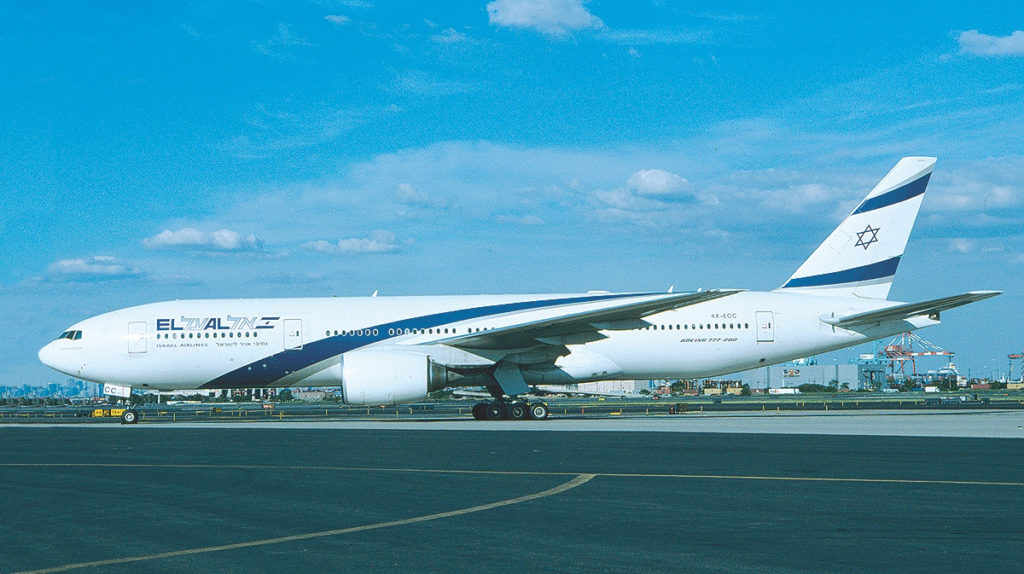
Coping With the Aftermath of 9/11
The international turmoil in the aftermath of September 11 created a crisis for the air transport industry, both in Israel and abroad. Many people were afraid to fly. The number of all airline passengers dropped 4% for the year, and air cargo declined 8%. Israel was even more severely hit, as accelerated Palestinian terror bombings and violent clashes had the side effect of a 46% percent drop in tourism in 2001. Overall passenger traffic at Ben-Gurion Airport was down 15% and air cargo tonnage reduced by 11%. Meanwhile, insurance and security costs rose. Charter airlines increased their share of the Israeli passenger market to 28%, and the oversupply of airline seats was undiminished.
To contend with the decline in traffic, EL AL cut expenses and curtailed service to several unprofitable destinations, but devoted more resources to service, security and safety. About 260 permanent employees took early retirement. The first and business class cabins of the 747-400s and 767s were upgraded, and an improved business class service called ‘EL AL Platinum was introduced on all aircraft, to attract more premium customers.
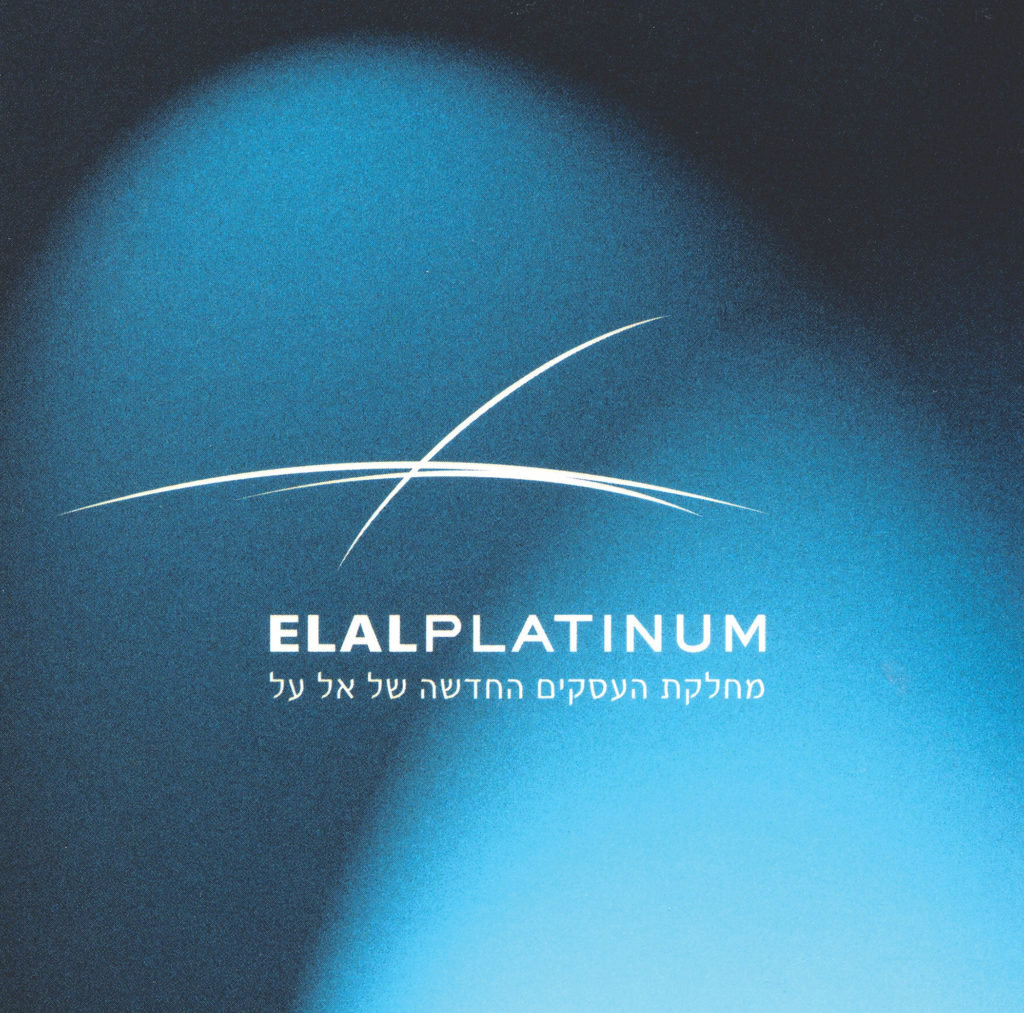
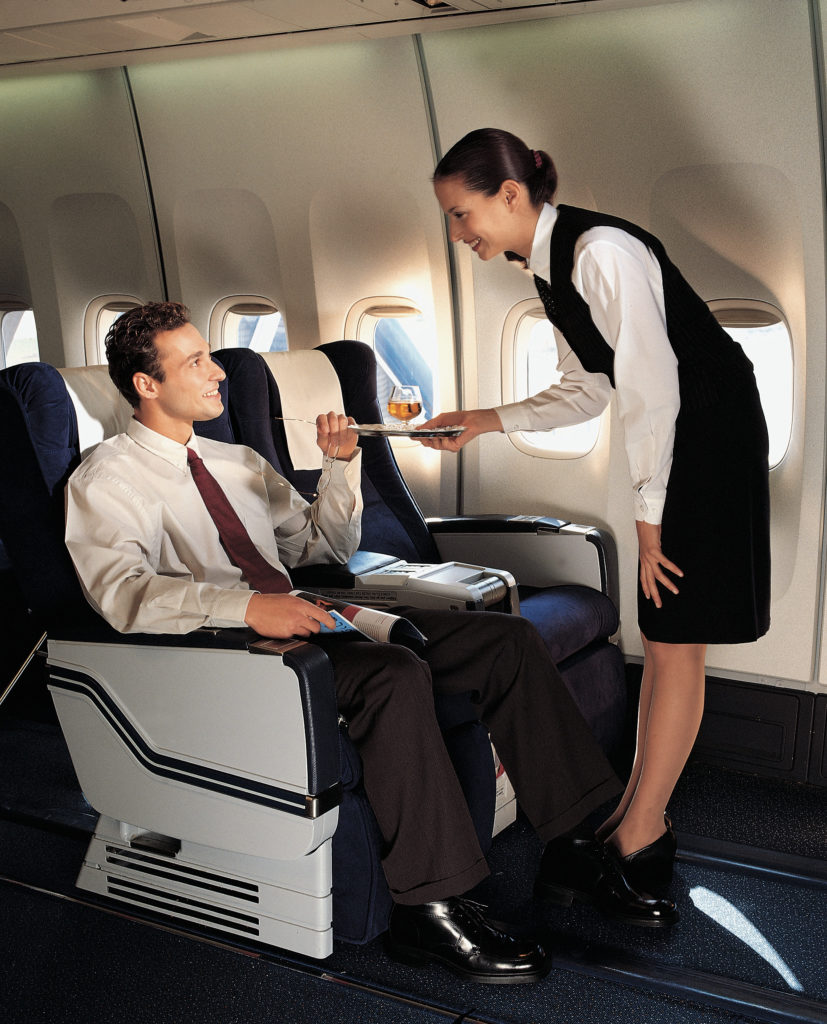
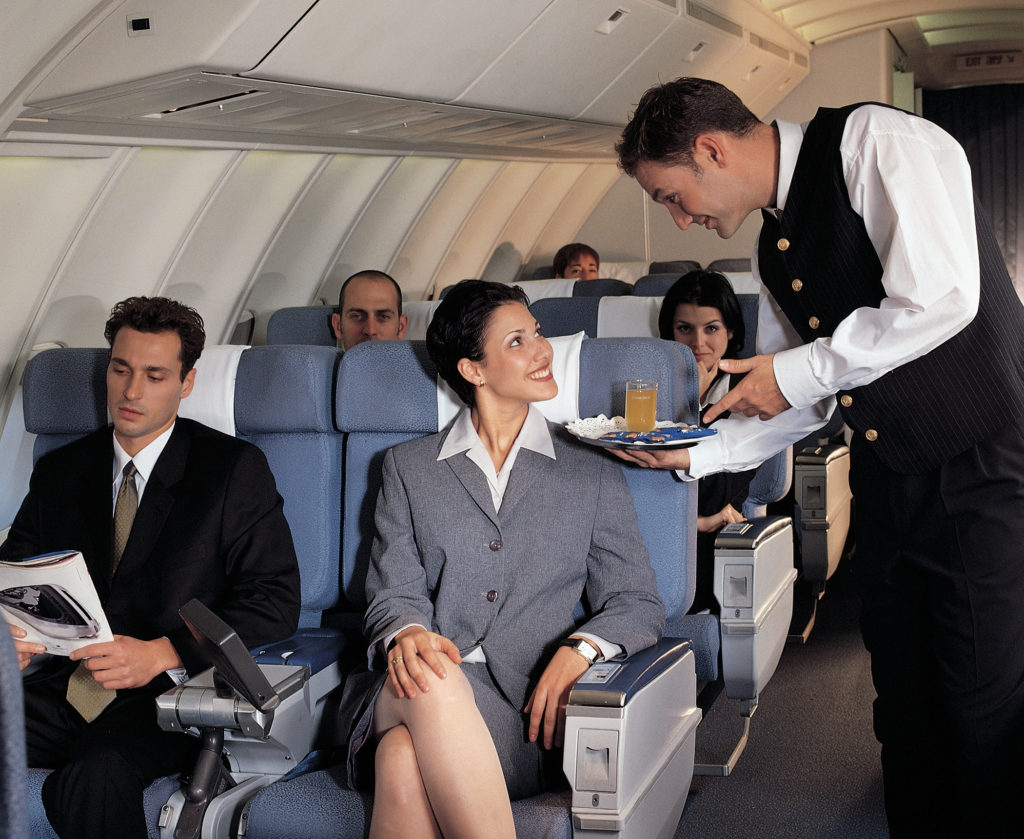
Nevertheless, the decline in tourism travel was too great, and 2001 ended with a net loss of $85.2 million. Differences arose between the directors and the president over the best course to take, and on 21 February 2002 David Hermesh submitted his resignation.
‘Turnabout’ Strategic Plan
Faced with continued challenges to profitability caused by sharp fluctuations in tourism to Israel, uncertain aviation fuel costs, and increasing competition both in passenger and cargo traffic, in 2001 EL AL hired the McKinsey consulting firm to help formulate a strategy to stabilize the airline’s financial situation. The resultant blueprint, based on the consultant’s report and adopted by the board, was called ‘Turnabout’.
Implemented in 2002, the plan re-emphasized many of the key elements in the airline’s pre-existing strategy, including focusing on business travelers, increasing market share among Israeli air travelers, and increasing flight frequencies on major routes and stabilizing the timetable. New ideas were set forth on marketing and pricing techniques, streamlining and improving operations and maintenance, and computerization and communications.
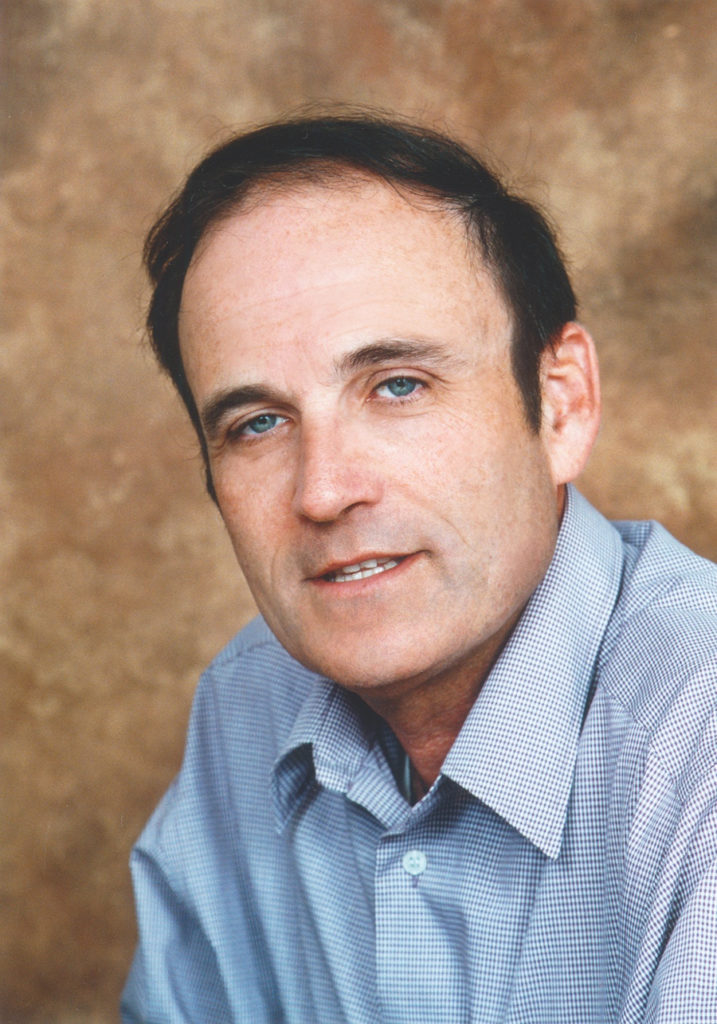
To carry out the plan, in March 2002 the directors selected Amos Shapira as EL AL’s new president, and following government approval he took office on 2 June. Shapira had served as managing director of Hogla-Kimberly, the Israeli subsidiary of Kimberly-Clark, for several years, where he successfully doubled activity and increased the company’s market share in all of its product categories.
Shapira indeed led a turnaround—cutting costs and implementing operational efficiencies and higher quality service. Losses were stemmed, reducing to $6.4 million in 2002, and by the second quarter of 2003 EL AL was once again operating profitably. Another good sign for the future emerged. The attention to service that started to take hold during the Feldschuh years, including the mindset that meeting customers needs comes first, became ingrained in the company. Workers at every level, from management to flight crews to ground staff, fully appreciated that heightened competition meant that EL AL had to consistently deliver superior service—and they were determined to do just that.
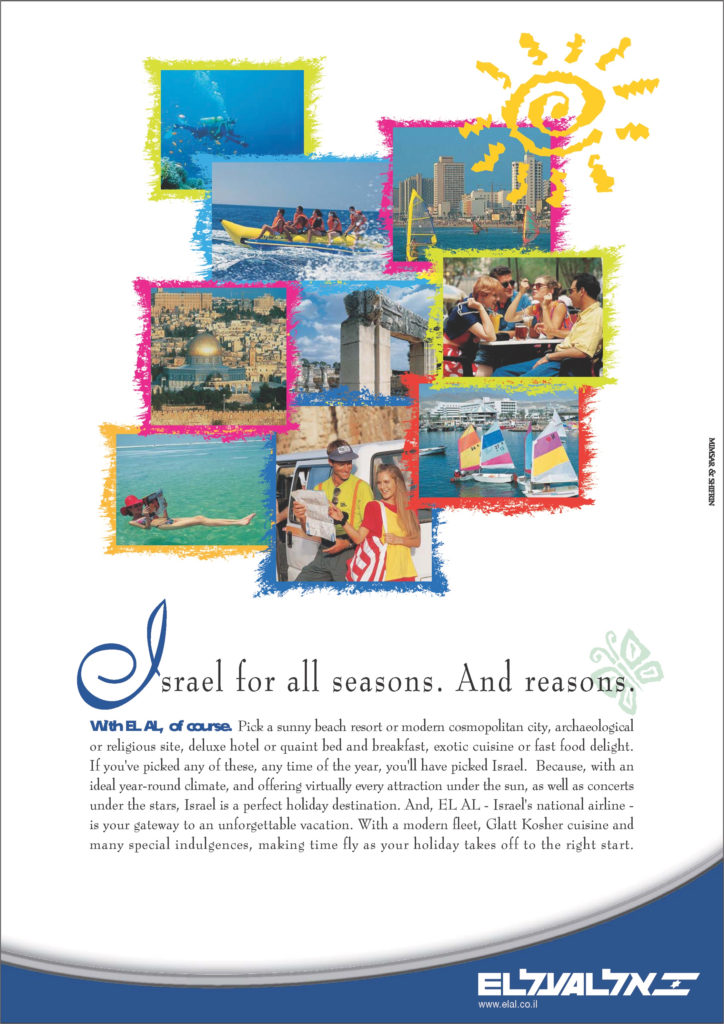
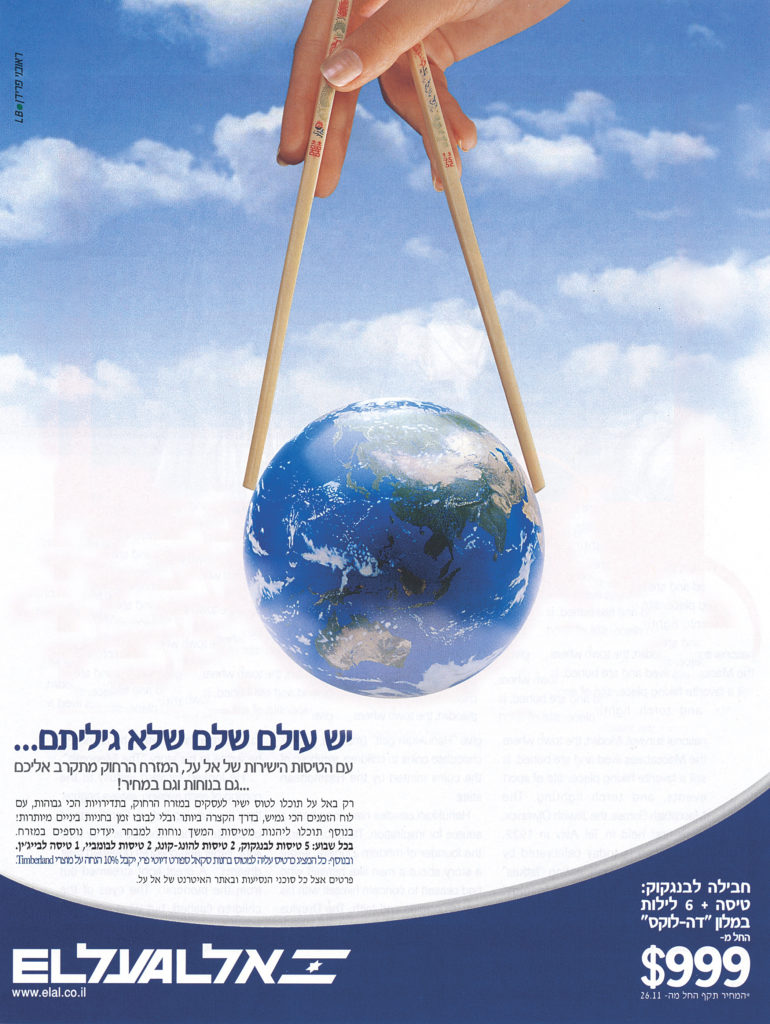
Privatization Revived
During the unsettled economic and political period of 2000 through the first half of 2002, the Israeli government’s 1998 decision to sell 49% of EL AL languished. On 8 July 2002, however, the government again dramatically changed its privatization policy. This time, the ministerial committee on privatization, headed by Prime Minister Ariel Sharon, decided instead to sell 100% of the state’s holdings in EL AL, through a sale to be made in phases.
With EL AL recording profits, the government issued a prospectus in May 2003 that valued the airline at around $112 million. After setting aside about 8% of shares for purchase by EL AL employees at a discount, the remainder was offered on the Tel Aviv Stock Exchange in bundled packages, each comprising immediately purchasable shares (15%) and options to buy more in the future (85%).
The privatization included steps to protect vital Israeli interests, including a ‘golden share’ in EL AL for the government enabling it to maintain national air transport in times of war or other emergency, and Israeli citizenship requirements sufficient to maintain ownership, director, and key officer control in local hands. Special agreements also described the benefits and conditions affecting EL AL as Israel’s flag carrier on then-existing scheduled routes.
Israeli investors avoided the offering in droves, believing that the airline’s future was too speculative. However, one group — Knafaim-Arkia Holdings (now known as Knafaim Holdings) — was undeterred. Knafaim, which already owned a conglomerate of Israeli aviation, transport and tourism companies, including 75% ownership of Arkia Israeli Airlines, became the majority private shareholder of EL AL.
Knafaim is controlled by members of the Borovich family. At the time of its investment in EL AL, it was headed by Prof. Israel (‘Izzy’) Borovich and his twin brother Oded (‘Dedi’). Izzy Borovich was originally a professor of information services at Tel Aviv University, and in the 1980s he and his brother acquired control of Arkia from EL AL and the Israel Labor Federation. Arkia had long been the smaller player in Israeli air transport, mainly confined to routes within Israel and to international charter operations, while EL AL had the prestige of scheduled overseas routes. But the business acumen of the Borovich brothers brought them success with Arkia and related businesses in aircraft leasing operations and tourism. They recognized that EL AL could be operated profitably when well managed, and they were now ready to take over Israel’s number one airline.
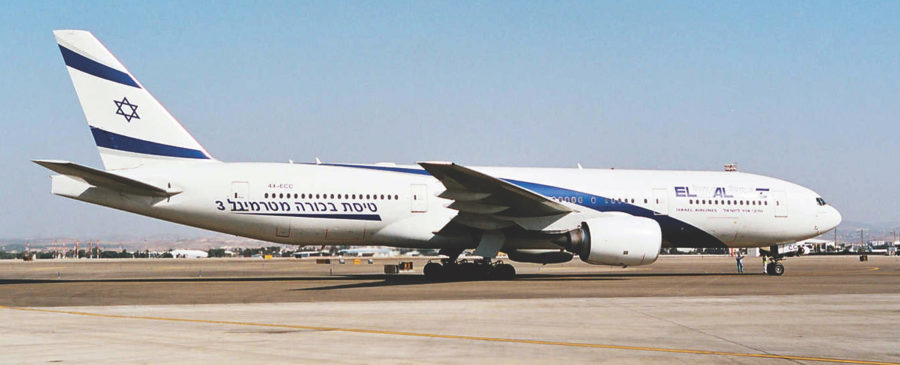
With EL AL’s profits steadily increasing during 2003 and 2004, Knafaim exercised sufficient share purchase options so that by December 2004 it owned 40% of EL AL’s shares—enough to be the controlling shareholder, as the government portion had been reduced to 30%. Knafaim also then held sufficient remaining long-term options that, if exercised, would increase its interest to 52% by June 2007.
The stage was now set for Knafaim to complete the privatization process by appointing new management and creating today’s dynamic, customer-oriented EL AL.
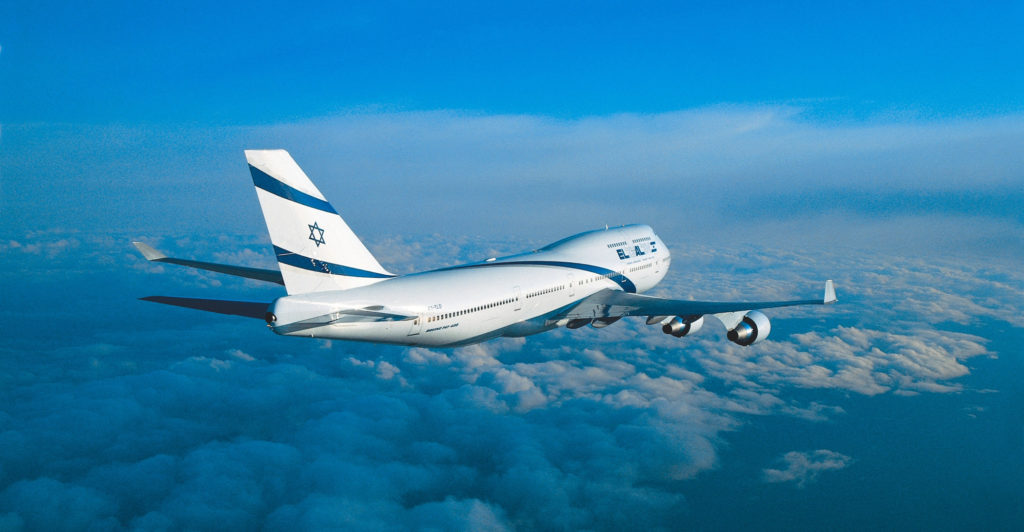
Copyright 2017, 2021, Marvin G. Goldman
